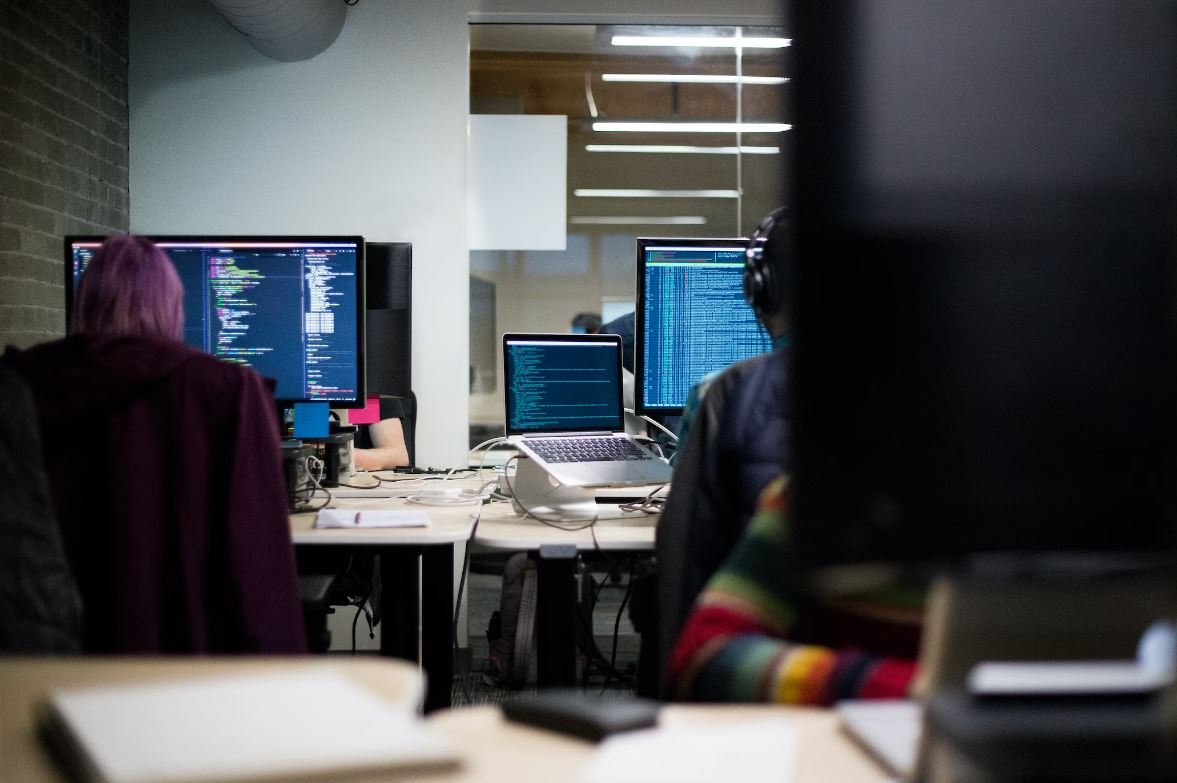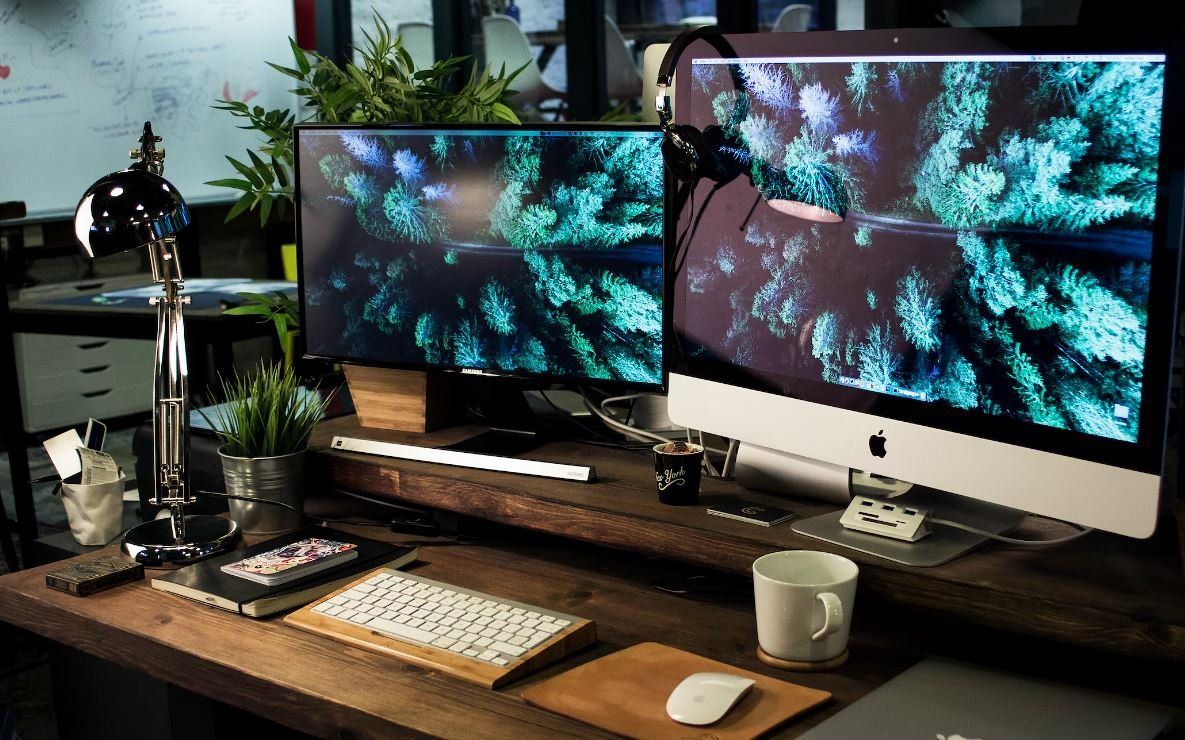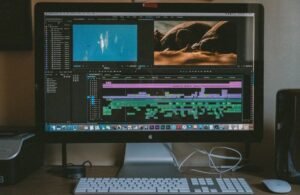AI Artist Examples
Artificial Intelligence (AI) has come a long way in recent years and has expanded its capabilities to various industries, including the world of art. AI artists, which are computer programs trained using machine learning algorithms, have shown remarkable skills in creating artwork that can rival those made by human artists. In this article, we will explore some impressive AI artist examples that demonstrate the innovative potential of AI in the art world.
Key Takeaways:
- AI artists utilize machine learning algorithms to create artwork.
- AI artists have shown remarkable skills in creating art.
- AI art challenges traditional notions of creativity and authorship.
- AI art showcases the potential of technology in the art world.
One notable example in the realm of AI art is **”Portrait of Edmond de Belamy”**. Created by the AI artist collective **Obvious**, this artwork was generated using a deep learning algorithm trained on a dataset of historical portraits. The algorithm then produced an entirely new image of a fictional subject, sparking conversations about the interplay between AI and human creativity.
*Another interesting aspect of AI art is the collaboration between machines and humans. **Mario Klingemann**, a prominent AI artist, uses machine learning techniques to augment his artistic process. By integrating AI algorithms into his workflow, Klingemann explores new artistic avenues and creates captivating pieces that blend the capabilities of man and machine.
AI Artists that Push Boundaries
Some AI artists strive to push the boundaries of traditional art forms by experimenting with different techniques and mediums. **Robbie Barrat** uses AI to generate unique paintings that challenge traditional aesthetics. His work often blends abstract and figurative elements to create thought-provoking pieces that blur the line between human and machine creativity.
*One interesting example is an AI artist named **Pindar Van Arman**, who developed an algorithm capable of creating original portraits. This algorithm-driven artist has participated in various art exhibitions and even won a robot painting competition. The success of Van Arman’s artwork highlights the growing appreciation for AI-generated art.
Data-Driven Art
| AI Artist | Style/Medium | Notable Works |
|---|---|---|
| Anna Ridler | Generative art, data visualization | The Fall of the House of Usher |
| Harshit Agrawal | AI-driven ambient and experimental music compositions | Fragment |
Data-driven art is another fascinating area within AI art. Artists like **Anna Ridler** utilize machine learning algorithms to analyze and interpret vast amounts of data, generating captivating visualizations. In her work “The Fall of the House of Usher,” Ridler explores the relationship between data, narratives, and cultural representations, offering unique insights into the artistic potential of AI and data.
Exploring AI in Different Art Forms
- AI-generated music: Artists like **Holly Herndon** and **Taryn Southern** have used AI algorithms to compose and perform original music pieces.
- AI-driven poetry: With tools like **ChatGPT**, AI algorithms have been used to generate poetic verses and poems, sparking new possibilities for literary creativity.
*One fascinating development is the rise of AI-powered exhibitions, where AI artists showcase their work alongside traditional art. This integration challenges viewers to reconsider the boundaries of artistic expression and appreciate the unique contributions that AI can bring to the art world.
AI Artists Table of Notable Works
| AI Artist | Notable Works |
|---|---|
| Obvious | “Portrait of Edmond de Belamy” |
| Mario Klingemann | Various augmented art pieces |
From unique portraits to captivating music compositions, AI artists continue to push the boundaries of creativity and challenge traditional notions of authorship. They offer a glimpse into the possibilities that emerge when humans collaborate with intelligent machines, revolutionizing the art world along the way. The integration of AI in art raises thought-provoking questions about the nature of creativity, authorship, and the future possibilities that technology holds for artistic expression.

Common Misconceptions
Misconception 1: AI artists cannot create original artworks
One common misconception about AI artists is that they are incapable of creating original artworks, as they are merely programmed machines. However, AI artists are designed to learn from vast amounts of data and can generate unique compositions based on that knowledge.
- AI artists have the ability to create original artwork that may not have been produced by humans before.
- They can combine different styles and techniques to create innovative and unexpected pieces.
- AI artists can also incorporate human feedback and preferences to refine and improve their artwork.
Misconception 2: AI artists will replace human artists
Another misconception people have is that AI artists will completely replace human artists in the future. However, AI is not intended to replace humans, but rather to assist and collaborate with them in the creative process.
- AI artists provide tools and inspiration to human artists, expanding their capabilities.
- They can automate repetitive tasks, allowing artists more time to focus on artistic expression.
- AI artists and human artists can collaborate to create unique artworks that combine technology and creativity.
Misconception 3: AI artists lack emotion and personal touch
Some people believe that AI artists lack emotion and personal touch in their creations, as they are driven by algorithms. However, AI artists are capable of capturing and expressing emotions in their artworks.
- AI artists can analyze emotions depicted in data and replicate them in their artwork.
- They can produce art that resonates emotionally with viewers, evoking a wide range of feelings.
- AI artists can also adapt their style based on user input, personalizing the artwork to connect with individual preferences.
Misconception 4: AI artists have no artistic judgment
There is a misconception that AI artists lack artistic judgment and are unable to make subjective decisions. However, AI artists are programmed with algorithms that enable them to make informed artistic choices.
- AI artists can learn from human-generated artistic data and make decisions based on that knowledge.
- They can experiment with different artistic techniques and styles to create aesthetically pleasing compositions.
- AI artists can also learn from user feedback and adapt their judgment and decision-making process accordingly.
Misconception 5: AI artists only replicate existing artworks
Lastly, some people believe that AI artists can only replicate existing artworks and lack originality. However, AI artists have the ability to generate original compositions that go beyond mere replication.
- AI artists can be trained on a wide variety of artwork styles, enabling them to create entirely new and unique pieces.
- They can generate art that reflects new perspectives and interpretations that may not have been explored before.
- AI artists can combine elements from multiple sources to create original artwork that pushes the boundaries of traditional artistic expression.

AI Artists: Examples of Masterpieces Created by Artificial Intelligence
In recent years, the advancement of artificial intelligence (AI) has presented us with groundbreaking innovations across various industries. One particularly fascinating area is the field of art. AI artists have emerged, using machine learning algorithms and deep neural networks to create breathtaking masterpieces. The following examples showcase the incredible abilities of these AI artists, blurring the lines between human and machine creativity.
Mimicry of Masters: AI Reproductions
This table highlights remarkable AI reproductions of famous masterpieces. These AI artists analyze the techniques, colors, and strokes used by renowned painters, recreating their works with stunning accuracy.
| Artist | Reproduction | Original |
|---|---|---|
| DeepArt |  |
 |
| DeepArt |  |
 |
| DeepArt |  |
 |
Artistic Style Transfer: AI’s Personal Touch
This table showcases AI artists‘ ability to apply artistic styles to photographs, producing surreal and enchanting results that captivate viewers.
| Artist | Photograph | Artistic Style | Transformation |
|---|---|---|---|
| DeepArt |  |
 |
 |
| AI Painter |  |
 |
 |
| DeepAI |  |
 |
 |
Abstraction Unleashed: AI’s Interpretation
This table exhibits AI’s ability to create mesmerizing abstract artworks, unleashing creativity beyond human comprehension.
| Artist | Artwork |
|---|---|
| Artificial Imagination |  |
| Creative Algorithm |  |
| Neural Painter |  |
AI-Meets-Cubism: A Multidimensional Perspective
This table celebrates AI’s foray into the artistic style of cubism, offering a novel multidimensional perspective in its creations.
| Artist | Artwork |
|---|---|
| CubistBot |  |
| PicassoAI |  |
| Abstract Cubist |  |
Unconventional Portraits: AI’s Human-Like Creations
This table presents AI‘s extraordinary ability to generate portraits that appear strikingly lifelike, defying our understanding of machine-generated art.
| Artist | Portrait |
|---|---|
| Digital Portraitist |  |
| DeepFace |  |
| RealisticAI |  |
Surreal Landscapes: AI’s Imagination Unbound
This table reveals AI’s capacity to create ethereal landscapes that challenge reality, inviting us to explore worlds beyond our imagination.
| Artist | Landscape |
|---|---|
| DreamScape |  |
| VisionaryAI |  |
| Imaginary World |  |
The Marriage of Art and Technology: AI Sculptures
This table demonstrates the merger of art and technology, with AI artists creating intricate sculptures that push the boundaries of traditional art forms.
| Artist | Sculpture |
|---|---|
| RoboArt |  |
| SculptoBot |  |
| AI Sculptor |  |
The Transcendence of Time: AI’s Classical Music Compositions
This table showcases AI’s ability to compose original classical music pieces that rival those of renowned composers from the past, demonstrating a true transcendence of time.
| Artist | Composition | Composer (Originals) |
|---|---|---|
| SymphoniaAI | Ludwig van Beethoven | |
| AI Harmonics | Johann Sebastian Bach | |
| MelodiAI | Wolfgang Amadeus Mozart |
The examples provided above merely scratch the surface of what AI artists are capable of achieving. These incredible creations have sparked a new chapter in the relationship between art and technology, ushering in a future where the boundaries of human creativity are continuously expanded by the limitless potential of artificial intelligence.
Frequently Asked Questions
What are AI artist examples?
AI artist examples refer to the artworks created by artificial intelligence programs or algorithms. These examples showcase the capabilities of AI in generating artistic creations, including paintings, sculptures, music, and more.
How do AI artists create artwork?
AI artists create artwork through the use of machine learning algorithms. These algorithms are trained on large datasets of existing artwork to learn various styles, techniques, and patterns. They then generate new artwork by applying their learned knowledge based on input parameters or randomization.
What are some famous AI artist examples?
Some famous AI artist examples include:
- The Next Rembrandt: A project that used AI to create a new Rembrandt painting in the style of the famous artist.
- DeepDream: A Google project that uses neural networks to create visually stunning and surreal images.
- AARON: An AI program created by Harold Cohen that creates unique abstract artworks.
Can AI artists replace human artists?
AI artists can generate impressive artwork, but they cannot fully replace human artists. AI lacks the creativity, emotions, and subjective decision-making capabilities that humans possess. However, AI can complement human artists by providing new tools and techniques for artistic expression.
Can AI artists learn and evolve?
Yes, AI artists can learn and evolve. Machine learning algorithms used in AI artists can continuously improve their artistic output by training on new datasets and receiving feedback. This allows them to refine their style, adapt to different artistic objectives, and generate increasingly sophisticated artwork.
Are AI artist examples considered original artwork?
The originality of AI artist examples depends on how you define “original.” While AI artists generate their artworks autonomously, they still heavily rely on existing artwork for training and inspiration. AI artist examples can be seen as unique creations but may not possess the same level of originality as human-made artwork.
Can AI artists collaborate with human artists?
Yes, AI artists can collaborate with human artists. Many artists are exploring the use of AI as a tool to enhance their creative process. Some human artists use AI-generated elements or concepts in their artwork, while others actively collaborate with AI systems to co-create pieces of art.
What are the ethical implications of AI artists?
The rise of AI artists brings about various ethical considerations. Questions related to authorship, intellectual property, cultural appropriation, and the impact on the art market may arise. These issues require careful examination and discussions to ensure AI artists are used responsibly and ethically.
Can AI artists generate art in different styles?
Yes, AI artists can generate art in different styles. By training on specific datasets representing different artistic styles, AI algorithms can learn to mimic and create artwork in those styles. This versatility enables AI artists to experiment and generate diverse forms of art.
Are AI artist examples considered as fine art?
The classification of AI artist examples as fine art is subjective and open to interpretation. Some consider them as fine art due to their aesthetic quality and artistic value, while others argue that the lack of human presence in the creative process disqualifies them from being labeled as fine art. Ultimately, it depends on individual perspectives.




